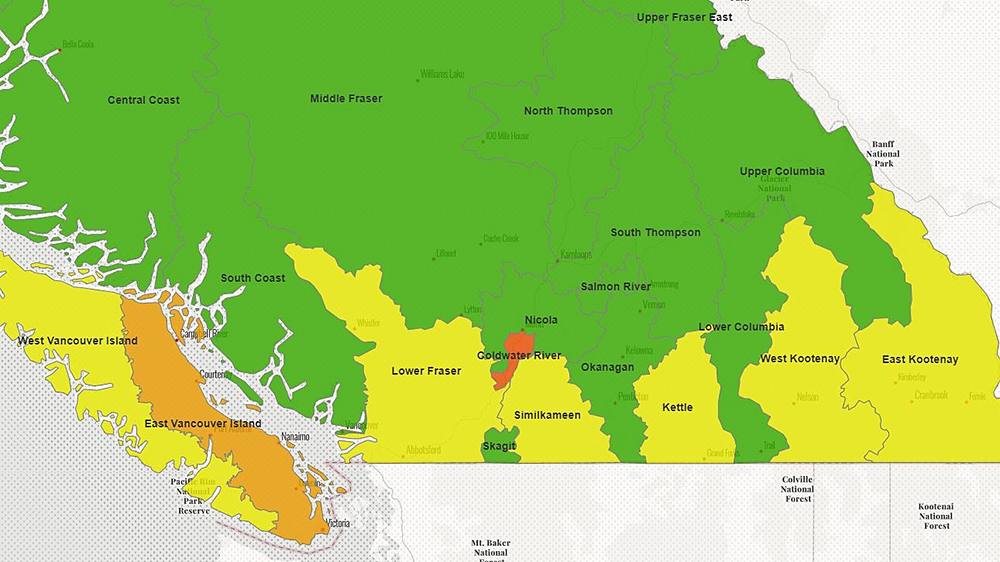Drought levels in parts of B.C. are on the rise, according to the provincial government.

On Thursday, the Ministry of Forests and Lands said drought conditions are affecting many streams and rivers across the southern half of the province, resulting in very low water flows.
The ministry said regions of concern included the Nicola in the Southern Interior and east Vancouver Island.
According to provincial data, one month ago, 30 of B.C.’s 32 listed basins were listed at Level 1, or normal. The other two were at Level 2, or dry.
As of Sept. 10, though, six basins were at Level 2, with one at Level 3 (very dry) and one at Level 4 (extremely dry).
The extremely dry basin is the Coldwater River watershed near Merritt in the Nicola region, while east Vancouver Island was listed as being very dry.

“Water conservation is everyone’s responsibility,” said the province, which is urging residents to observe local watering restrictions and water conservation bylaws.
“Maximum water conservation is being urged for all areas where low flows are approaching a critical environmental flow threshold for ecosystems and fish.”

Below are suggestions from the province regarding water conservation:
Residential:
- Limit outdoor watering.
- Do not water during the heat of the day or when it is windy.
- Consider planting drought-tolerant vegetation.
- Take shorter showers.
- Do not leave taps running.
- Install water-efficient showerheads, taps and toilets.
Farm:
- Implement an irrigation scheduling program using real-time weather data.
- Schedule irrigation to match crop needs and soil storage capacity.
- Improve water system efficiencies and check for leaks.
- Focus on high-value crops and livestock.
Industry:
- Reduce non-essential water use.
- Recycle water used in industrial operations.
- Use water-efficient methods and equipment.

For more about drought information in B.C., click here.
To view a map and tables of droughts in B.C., click here.
- Ontario First Nation calls for chemical plant to be shut down amid ‘dangerously high’ benzene levels
- Nova Scotia scraps spring bear hunt idea, public ‘very divided’ on issue
- Ottawa looks to launch national flood insurance program within 12 months
- Ecuador rations power, declares emergency as drought limits hydro output




Comments